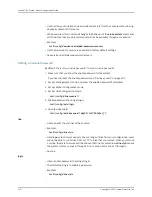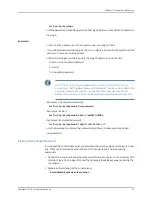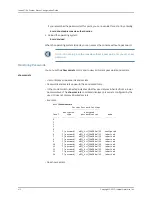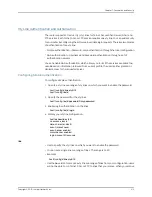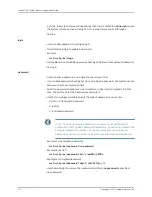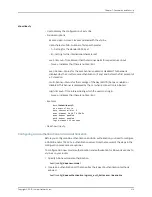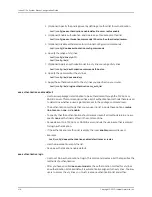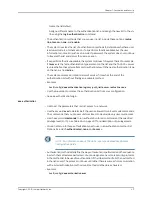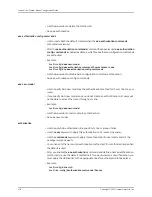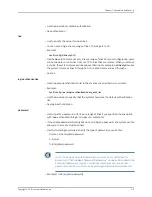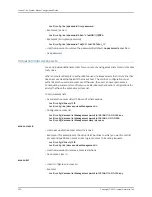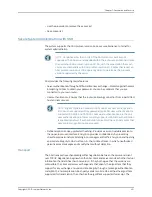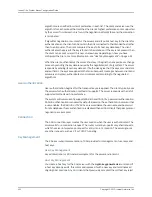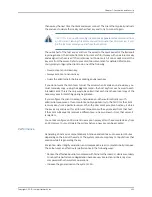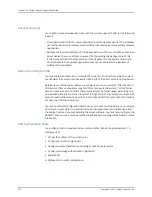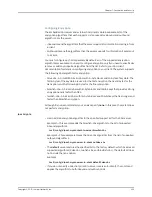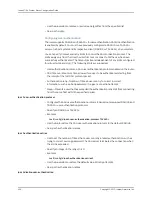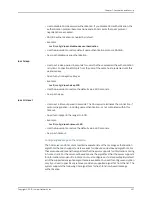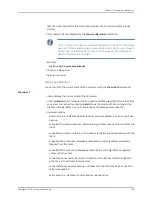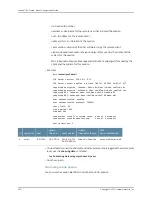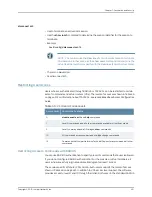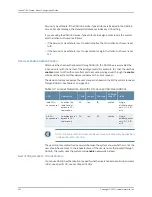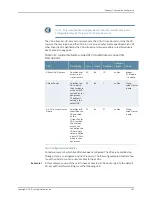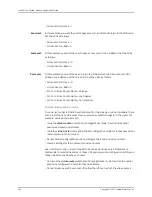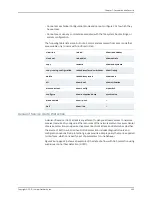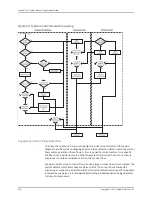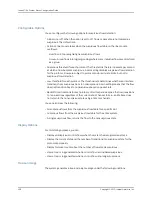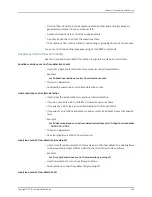
Security Concerns
You might be concerned about security with the current support of SSH for the following
reasons:
•
Only RADIUS and user authentication methods are supported. If you disable
user authentication, all users are accepted if the client and server successfully complete
negotiation.
•
Because the load on the system CPU increases with use of SSH, you might be concerned
about denial-of-service attacks. However, the forwarding engine takes care of this
issue, because it limits the rate at which it sends packets to the system controller. A
flood of packets from a packet generator does not cause problems regardless of
whether SSH is enabled.
Before You Configure SSH
You must obtain and install a commercial SSH client on the host from which you want
to administer the system. Versions earlier than 2.0.12 of the SSH client are not supported.
Determine your Telnet policy before you configure SSH on your system. Effective use of
SSH implies that you should severely limit Telnet access to the system. To limit Telnet
access, create access control lists that prevent almost all Telnet usage, permitting only
trusted administrators to access the system through Telnet. For example, you might limit
access to administrators who need to Telnet to the system from a remote host that does
not have the SSH client installed.
You must install and configure a RADIUS server on a host machine before you configure
SSH on your router. Refer to your RADIUS server documentation for information about
choosing a host machine and installing the server software. You must also configure the
RADIUS client on your router. See
JunosE Broadband Access Configuration Guide
for more
information.
SSH Configuration Tasks
You configure SSH on individual virtual routers, rather than on the global system. To
configure SSH:
1.
Access the context of the virtual router.
2.
Configure encryption.(Optional)
3.
Configure user authentication, including connection parameters.
4.
Configure message authentication.(Optional)
5.
Enable SSH.
6.
Display SSH to verify configuration.
Copyright © 2010, Juniper Networks, Inc.
424
JunosE 11.3.x System Basics Configuration Guide
Summary of Contents for JUNOSE 11.3
Page 6: ...Copyright 2010 Juniper Networks Inc vi...
Page 8: ...Copyright 2010 Juniper Networks Inc viii JunosE 11 3 x System Basics Configuration Guide...
Page 24: ...Copyright 2010 Juniper Networks Inc xxiv JunosE 11 3 x System Basics Configuration Guide...
Page 32: ...Copyright 2010 Juniper Networks Inc 2 JunosE 11 3 x System Basics Configuration Guide...
Page 146: ...Copyright 2010 Juniper Networks Inc 116 JunosE 11 3 x System Basics Configuration Guide...
Page 166: ...Copyright 2010 Juniper Networks Inc 136 JunosE 11 3 x System Basics Configuration Guide...
Page 432: ...Copyright 2010 Juniper Networks Inc 402 JunosE 11 3 x System Basics Configuration Guide...
Page 488: ...Copyright 2010 Juniper Networks Inc 458 JunosE 11 3 x System Basics Configuration Guide...
Page 524: ...Copyright 2010 Juniper Networks Inc 494 JunosE 11 3 x System Basics Configuration Guide...
Page 554: ...Copyright 2010 Juniper Networks Inc 524 JunosE 11 3 x System Basics Configuration Guide...
Page 566: ...Copyright 2010 Juniper Networks Inc 536 JunosE 11 3 x System Basics Configuration Guide...
Page 588: ...Copyright 2010 Juniper Networks Inc 558 JunosE 11 3 x System Basics Configuration Guide...
Page 613: ...PART 3 Index Index on page 585 583 Copyright 2010 Juniper Networks Inc...
Page 614: ...Copyright 2010 Juniper Networks Inc 584 JunosE 11 3 x System Basics Configuration Guide...
Page 632: ...Copyright 2010 Juniper Networks Inc 602 JunosE 11 3 x System Basics Configuration Guide...

